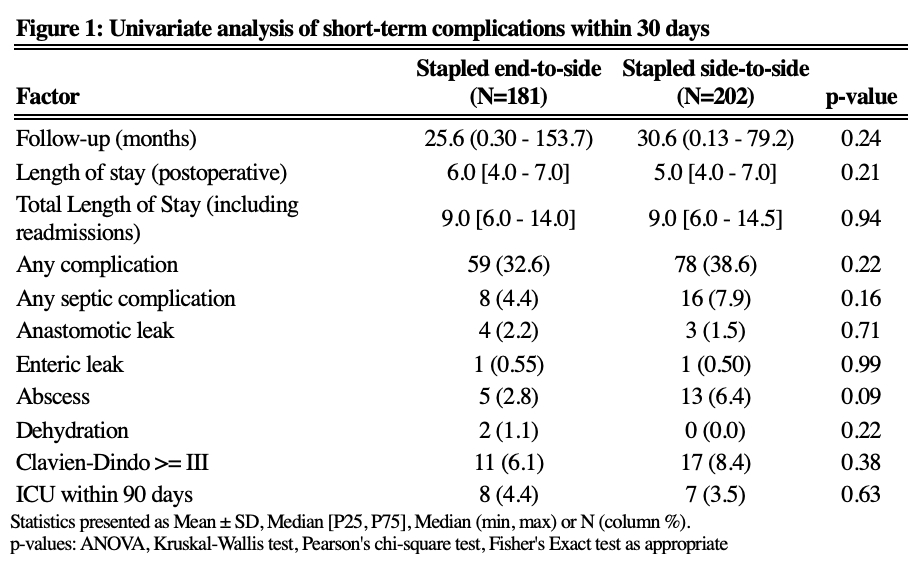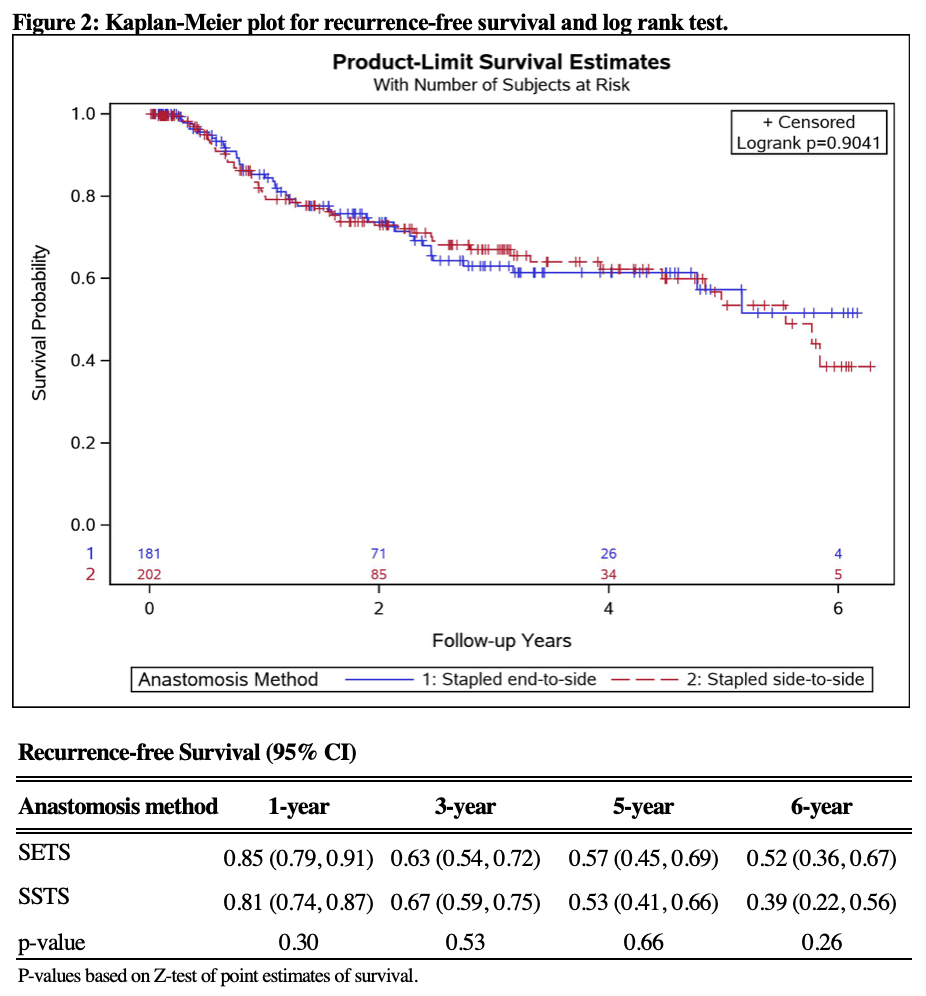STAPLED END-TO-SIDE VS. SIDE-TO-SIDE ANASTOMOSIS AFTER ILEOCECECTOMY FOR CROHN'S DISEASE: A PROPENSITY SCORE-MATCHED ANALYSIS
Stephen Brandstetter1, Mariane Camargo*1, Alexandra Aiello2, Luca Stocchi1, James M. Church1, Tracy L. Hull1, Ian Lavery1, Scott Steele1, Stefan D. Holubar1, Michael Valente1
1Colorectal Surgery, Cleveland Clinic Foundation, South Euclid, OH; 2Quantitative Health Sciences, Cleveland Clinic Foundation, Cleveland, OH
Background
Ileocolic resection (ICR) is the most common surgical procedure for Crohn's disease (CD). Anastomotic construction is most commonly achieved with stapled side-to-side anastomosis (SSTS) or hand-sewn end-to-end anastomosis (ETE), with the decision often made by tissue quality, surgeon experience, and surgeon preference. Another option that combines advantages of both SSTS and ETE, and which is extensively used at our institution, is the Stapled End-to-Side anastomosis (SETS). SETS recapitulates the normal anatomy with the ileum entering the colon at a right angle and facilitates reconstruction in the face of a lumen size discrepancy between colon and ileum. However, results after SETS have not previously been reported. Therefore, we aimed to compare short-term septic complications and long-term recurrence-free survival of CD between patients who underwent SETS vs. SSTS.
Methods
This study was a retrospective analysis of a prospectively maintained database over a 5-year period. All patients who underwent resection and anastomosis for terminal ileal CD from 01/2012 - 12/2016 were included. Patients who had a stoma or other type of anastomosis were excluded. The two groups were compared with univariate analysis. Recurrence rates were assessed using Kaplan-Meier curves and a log-rank test. Cox-proportional hazard and linear regression models with propensity score inverse probability of treatment weighting were used to further evaluate postoperative outcomes and recurrence of CD.
Results
A total of 383 patients were analyzed: 181 underwent SETS and 202 underwent SSTS. There were no differences between the groups regarding demographics and disease characteristics, except SETS patients had less weight loss (8% vs. 15%, p=0.04) and fewer phlegmons (5% vs. 10%, p=0.05). SETS operations were shorter (120 min. vs. 133 min., p=0.02), and fewer were performed laparoscopically (46% vs. 65%, p=0.001). Patients who underwent SETS compared to STSS had surgeons with more years of experience, 23 vs. 11 years, p<0.001, respectively. There was no significant difference in any short-term outcome between the two groups on univariate analysis (Fig. 1). The Kaplan-Meier analysis (Fig. 2) for recurrence showed no difference in recurrence rates. After inverse probability of treatment weighting using the propensity score and number of postoperative medications, there was no significant difference in any of the outcomes between the two groups.
Conclusions
At our center, SETS and SSTS anastomoses in patients undergoing ICR for CD, after rigorous adjustment for confounders, were comparable with respect to short-term complications and long-term recurrence rates. Therefore SETS remains a viable method for reconstruction, especially in the case of bowel lumen size mismatch.

Back to 2019 Posters




